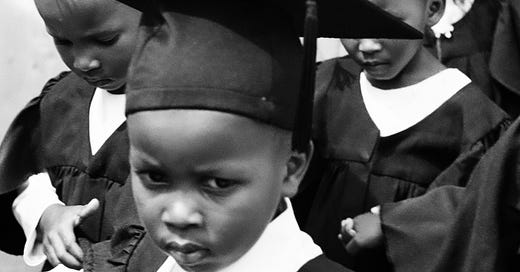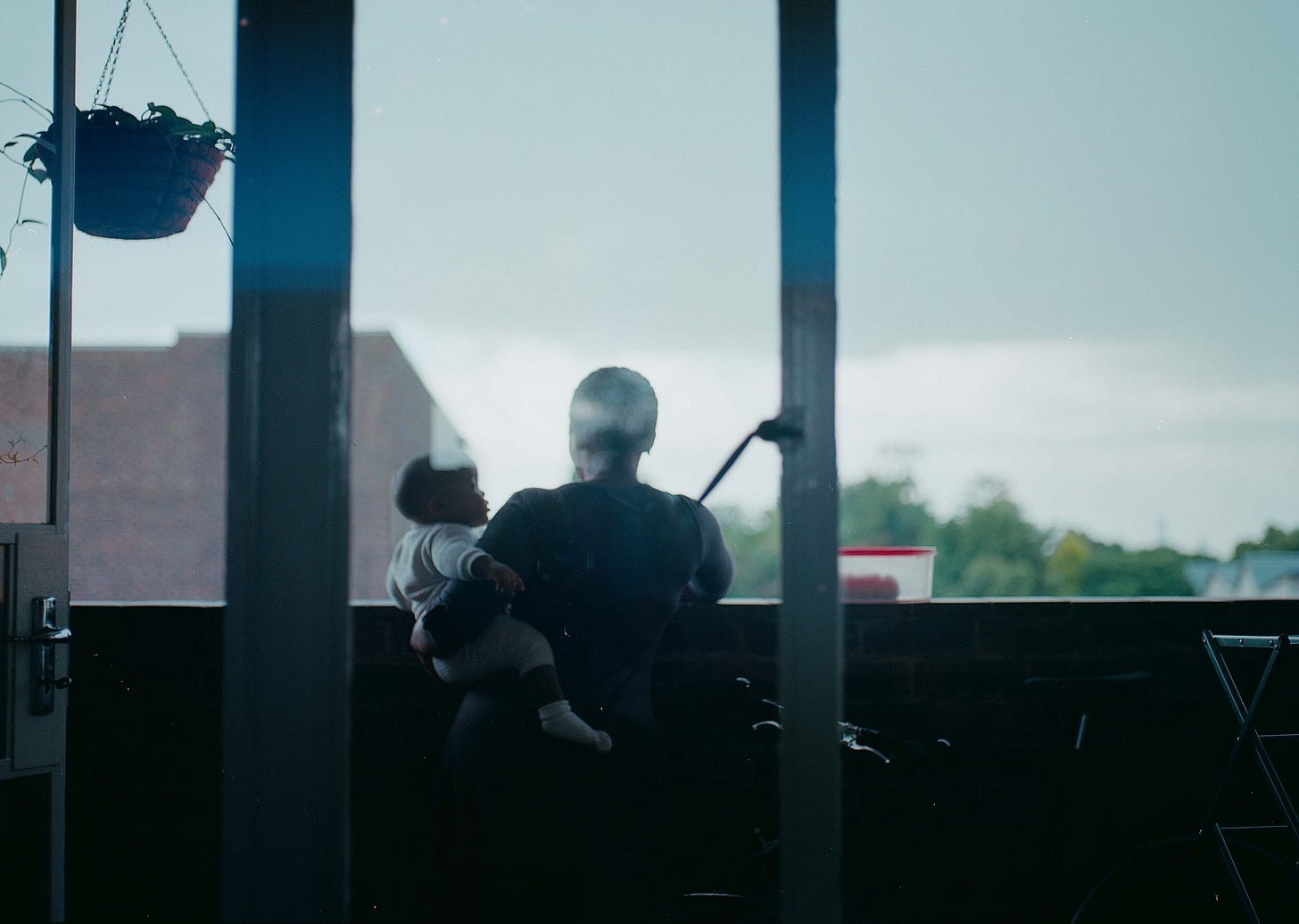I can only see the face of one girl in full, even if she has her eyes fixed outside the frame. There’s a slight tightening around her eyes. Not a frown really, maybe a mark of focus. The two girls immediately behind are similar in their expressions, with a downward tilt in their head. If this is a collective portrait of a group of girls, then it is so because of a detail I missed in the first instance of looking, which is that, all the way back, their hands are interlocked. Hence, one way to describe their form is that they are an unbroken zigzag of onward-facing girls.
— Emmanuel Iduma
“My approach is to be an excellent observer of all things.”
This photo was taken in a township called Guguletu, on the border of Cape Town. I was invited by a friend who’s been working with the students and she asked if I could capture the 1st graders graduation.
It’s the perfect example of patience, preparation, and anticipation. I only had two rolls of film that day since I was asked to cover it at the last minute. So I made sure to be ready when the activities began.
My approach is to be an excellent observer of all things before even thinking about bringing my camera out. I read situations; some things are too sensitive and better to not be captured. I try to use my moral/human compass to guide me. It never steers me wrong.
— Julius Adorsu
About Julius Adorsu
Julius Adorsu prefers to think of himself as an artist. “For me, the camera is a tool of capturing a moment in time, a flicker of light in space,” he says. He studied Automotive Technology. He is a self-taught photographer working for over 10 years. He is a Hasselblad Masters Finalist (2021), and a Fine Art Photography Award Nominee (2022). More of his work can be found on his website, and Instagram.
Last Week — “Uncertain” by Kgomotso “Neto” Tleane
I mostly shoot to document. That moment might not seem so important at the time but a few months or years down the line the moment becomes something of importance. For instance, this photograph means a lot to me because I now remember what this time felt like. It's important to document for archival purposes; one day my daughter will have access to this photograph and know what was happening.
Read more.
This is the 67th edition of this publication, which also read on web (best for viewing images), and via the Substack iOS/Android apps.
Every Wednesday I feature one photograph and the photographer who took it: you’d read a short caption from me, and a statement from the photographer. And every Saturday I publish a lengthier engagement with the work featured in the newsletter. My goal is to engage with early to mid-career African photographers, and to create a platform in which photographers lead the cataloguing and criticism of their work.
Thank you for reading. If this newsletter was shared with you, consider subscribing, or forward to a friend. Please whitelist the newsletter to ensure you never miss it.





